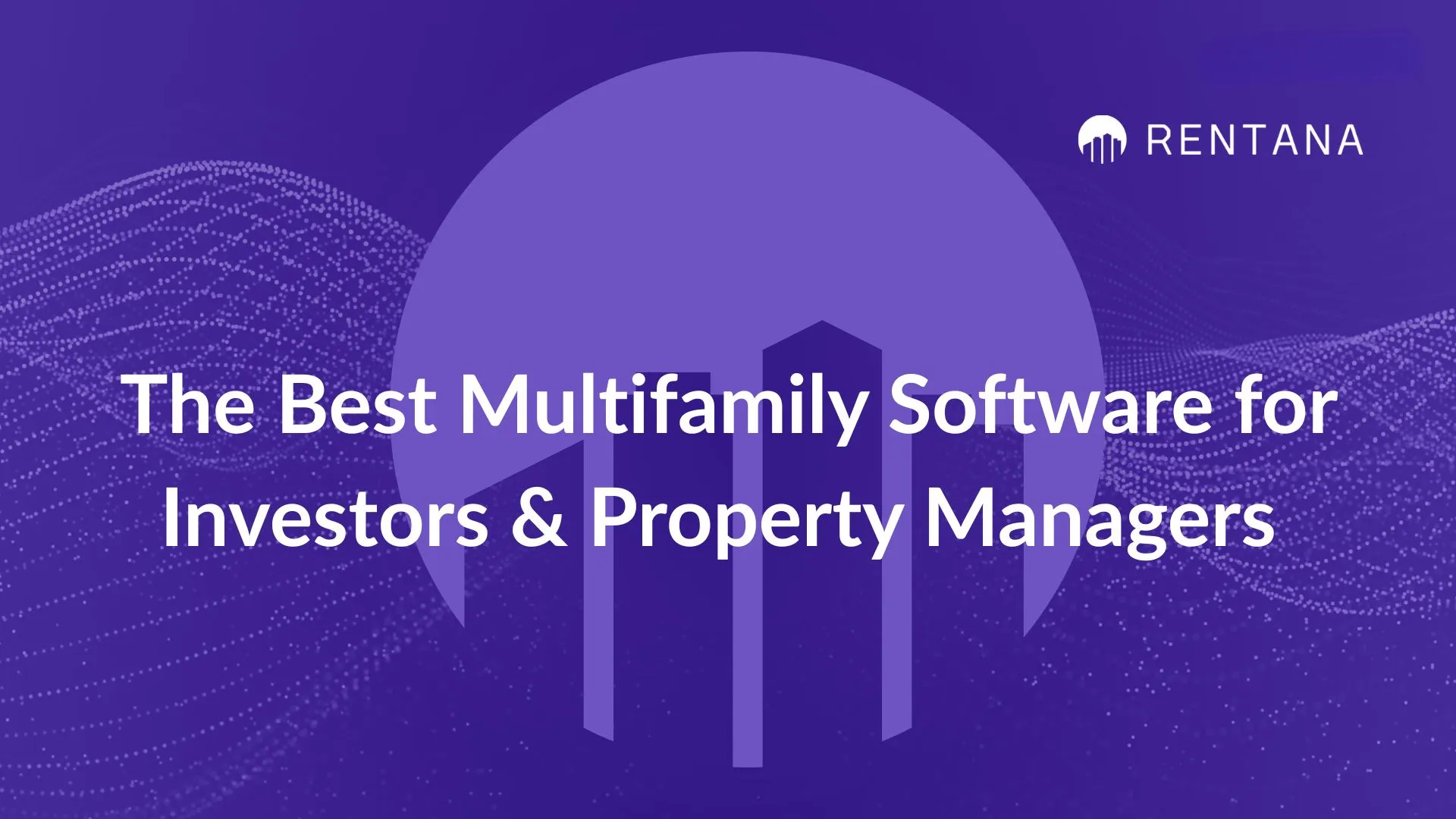




Managing multifamily properties isn’t what it used to be. Between juggling rent payments, maintenance requests, tenant communication, and financial reporting, things can get hectic fast.
If you manage rentals for clients, track your own investments, or oversee a busy multifamily building, the right software can help you stay on top of everything.
The great thing is, Multifamily software has come a long way in recent years. A 2024 report from Introspective Market Research projects the proptech software market to grow at a CAGR of over 10%, while a 2025 report from SNS Insider estimates a CAGR of 10% to reach $13.20 billion by 2032.
What used to be simple accounting tools has evolved into full-service platforms that handle everything from marketing vacant units to automating lease renewals and analyzing property performance. In 2025, having a multifamily software is a must if you want to stay competitive and keep operations running smoothly.
In this guide, we’ll walk through the 11 best multifamily software tools of 2025 that are making real estate analytics and property management faster, smarter, and more profitable.
Related: What is a Good Cap Rate for a Multifamily Property?
Multifamily software is a digital platform that helps property owners, operators, and asset managers run apartment communities more efficiently. It brings all the key tasks of managing multifamily housing into one place, including leasing, rent collection, maintenance, marketing, revenue forecasting, and resident communication.
A multifamily software focuses on core functions like property operations, performance and predictive analytics, automation, and portfolio management.
In simple terms, multifamily software replaces manual spreadsheets and disconnected tools with one system that tracks how well a property is performing and what needs attention next.
For investors and operators, this means faster decisions, fewer errors, and clearer visibility into revenue, occupancy, and overall property health, all of which are essential for scaling a rental portfolio.

Running multifamily properties sounds simple enough until you’re in the middle of it.
One tenant might be calling about a leaky faucet, another is asking about renewing their lease, and a third is late on rent.
On top of that, you’re managing cleaning schedules for shared spaces, collecting payments, and making sure your maintenance team knows which repairs to handle first. It’s a lot to juggle, and things can easily slip through the cracks when you’re relying on spreadsheets or scattered email threads.
That’s where the right multifamily software comes in. Instead of chasing down updates or juggling multiple systems, everything is organized in one place. You can list new units, track applications, send rent reminders, and even monitor maintenance requests from your phone.
But convenience is just one part. Revenue is another.
Multifamily tools like Rentana have built-in analytics and revenue insights that help you make smarter business decisions. For example, you can spot which units are staying vacant too long, track rent trends across your portfolio, or identify which properties are bringing in the highest returns. These insights help property managers and investors see the bigger picture instead of just reacting to day-to-day issues.
With powerful automation and real-time analytics working together, multifamily management becomes less about putting out fires and more about growing your bottom line.
Recommended: The Best AI Tools for Real Estate Investors

Rentana is redefining how multifamily teams understand and act on their data. Built with revenue intelligence at its core, Rentana turns complex property and market information into clear, visual insights that help teams make smarter, faster decisions. From a single dashboard, users can view every portfolio, property, and unit through interactive health indicators, predictive analytics, and AI recommendations.
Each pricing or occupancy recommendation comes with a transparent AI breakdown showing the data behind the decision, so users always know why the system suggests a change.
What sets Rentana apart is how effortlessly it connects the big picture with granular detail. You can go from a full portfolio overview to a single-unit analysis in just two clicks, all while tracking performance, pricing trends, and market comps in real time. It integrates directly with your PMS, exports data via API or CSV, and even offers customizable views, allowing each user to see data the way that best fits their workflow.
Rentana blends flexibility, accuracy, and clarity; the essentials for modern multifamily revenue growth.
It’s one thing to talk about analytics and AI, but the real proof is in the results. Multifamily operators using Rentana are seeing measurable, portfolio-wide improvements in performance, efficiency, and revenue.
When URS Capital Partners decided to modernize its revenue management process, the team rolled out Rentana across 12 properties and 2,500 units in just two weeks. The impact was immediate. Within a single quarter, URS achieved 8.2% sequential NOI growth, boosted daily occupancy by 7.3%, and reduced rent review times from 90 minutes to just 15 minutes per property.
“Rentana is the best tool to manage your business and focus on what matters,” said Heather Moore, Consultant at URS Capital Partners. “It’s beyond BI. It’s an interactive dashboard where operators and asset managers can see not just if they can make more money, but exactly how to make more money.”
By combining public market trends with private portfolio data, Rentana helped URS uncover new revenue opportunities, predict lease turnover, and manage pricing with confidence, all while driving a 414% ROI in its first year.
In a 90-day head-to-head pilot against a leading legacy platform, 29th Street Capital (29SC) chose Rentana as its exclusive revenue intelligence partner for its 12,000+ unit portfolio. The results were decisive: $4.6 million in incremental valuation gain, 3.5% stronger net rental income, and far faster implementation.
Rentana properties went live 21 times faster than those on competitor systems, with onboarding completed in one to two days instead of several weeks. Support response times averaged five minutes, and the platform delivered 125 new features in 90 days, compared to a single feature update from the competing product.
“I would recommend Rentana without a doubt,” said Robert Waz, VP at 29th Street Capital. “The UI is miles ahead, we trust their data security, and their fast, insightful, and personalized platform gives us a strategic advantage to grow our assets.”
These success stories highlight why leading operators are turning to Rentana. For firms that want to modernize revenue management without months of disruption, Rentana is proving that smarter technology leads to stronger portfolios.
You Might Like: Is Multifamily Considered Commercial?

Picking the right multifamily software is about finding the one that actually fits the way you work. Every portfolio is different, and what feels like a perfect match for a large property group might be overkill for an independent landlord. The goal is to find software that balances capability, cost, and scalability without adding unnecessary complexity.
Start by looking at three key factors:
Here’s a simple way to narrow it down:
Once you’ve narrowed it down, test before you commit. Most providers offer free trials or guided demos. Take the time to see how the software feels in real use, and how easy it is to import data, customize dashboards, and train your team.
Also pay attention to customer support and data migration options. A responsive support team can save hours when you hit a snag, and smooth data transfers ensure you don’t lose valuable information during setup. Finally, check reviews, case studies, and even community forums to gauge vendor reputation. The best software isn’t only powerful, it’s reliable, intuitive, and backed by a team that supports your success long after the setup.
Recommended: The Best AI Tools for Commercial Real Estate
The multifamily software space is moving fast, and 2025 is shaping up to be the most tech-driven year yet. Platforms are becoming more mobile-first, allowing managers and leasing agents to handle everything from maintenance requests to rent approvals right from their phones. AI is taking center stage, helping predict rent trends, automate leasing tasks, and even flag maintenance issues before they become expensive repairs.
We’re also seeing a major push toward integrated analytics and smart building tech. Tools like Rentana are leading the way with real-time revenue intelligence, giving owners a deeper understanding of portfolio performance.
The key takeaway? The future of multifamily management is connected, intelligent, and data-driven. If you haven’t already, start building your shortlist of tools that fit your portfolio’s size and goals, request a few demos, and plan your budget for upgrades.
The right software will position your business for smarter growth in the years ahead.